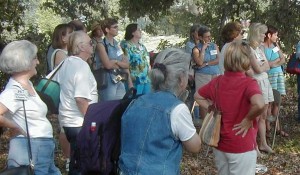 I recently attended the National Extension Conference on Volunteerism. Martin J. Cowling delivered the keynote address, “Creating a Pro-Volunteer Culture.” He is a leading consultant on not for profit and volunteer management. Currently the CEO of People First – Total Solutions, Martin works regularly with individuals and organizations internationally on areas connected with not for profit management, organizational culture, motivation, effective volunteer management, constructive personal development and financial disadvantage.
I recently attended the National Extension Conference on Volunteerism. Martin J. Cowling delivered the keynote address, “Creating a Pro-Volunteer Culture.” He is a leading consultant on not for profit and volunteer management. Currently the CEO of People First – Total Solutions, Martin works regularly with individuals and organizations internationally on areas connected with not for profit management, organizational culture, motivation, effective volunteer management, constructive personal development and financial disadvantage.
Edgar Schein, one of the most prominent theorists of organizational culture, tells us that as groups evolve over time, they face the challenge of adapting effectively to the external environment in order to survive. In order to find solutions to the problems that confront them, they engage in a kind of collective learning that creates the set of shared assumptions, values and beliefs, that we call “culture.” These assumptions are taken for granted. “Volunteer Culture” would include the shared assumptions, values and beliefs that the organization holds in regards to working and interacting with volunteers. What are some signs that the Volunteer Culture at your organization is supportive of volunteers and the work the y do?
y do?
Reputation can be a sign. How many volunteers are with your organization and what attitudes do they have about that experience? What impressions do others have about what it is like to volunteer with your organization? Studies indicate that about 47% of volunteers are recruited by word of mouth. A volunteer who feels good about their experience share it with other potential volunteers.
What does your organization write, say or broadcast about volunteering? Take some time to scan the official publications of the organization. Check out annual reports, the website, and the strategic plan. What does it take for the volunteer efforts to receive recognition in these publications?
How do employees treat the volunteers? Do they see them as equal team members for the work of the organization or are they viewed as a nice extra, but not really necessary for the successful operation of the organization?
How do volunteers treat each other? Is there respect for all aspects of effort/work where volunteers are engaged?
Let’s focus on the leadership of the organization. Senior management may have a volunteer culture that is different from the broader organization. Is the volunteer culture different for those serving on the Board of Directors and working closely with the CEO?
Values and beliefs that are fundamental to the organization may be a source of information for you to determine the shared assumptions about volunteers and the work they do for the organization. Are volunteers encouraged to join the staff at coffee breaks? Is there a separate supply cupboard for paid staff? Do you show respect for others? Does the term “others” include volunteers?
Spend some time assessing your organization to identify signs of a “Pro-Volunteer Culture.” Celebrate when you see it! Analyze the signs that may be hard to identify and take the action steps needed to enhance your “Volunteer Culture.”



